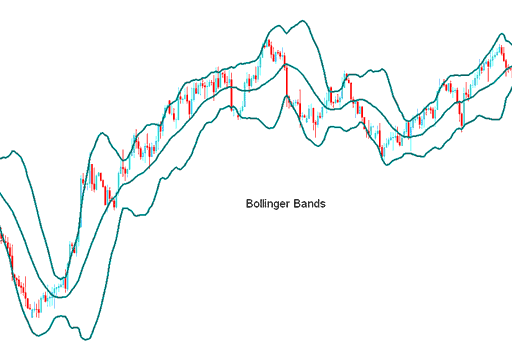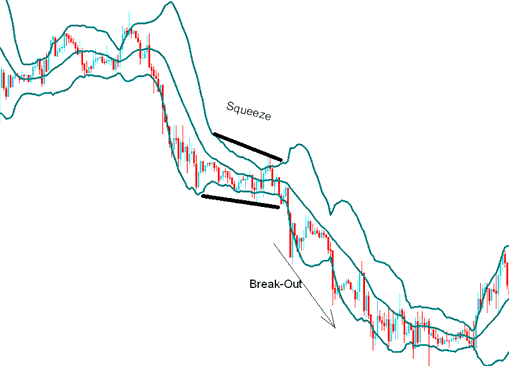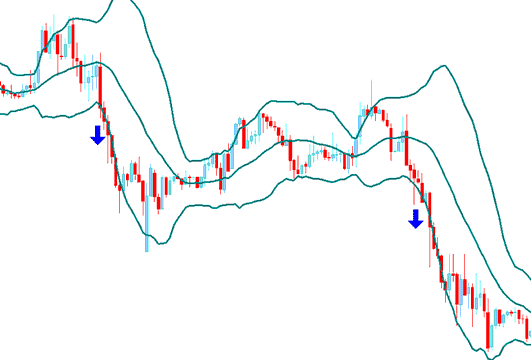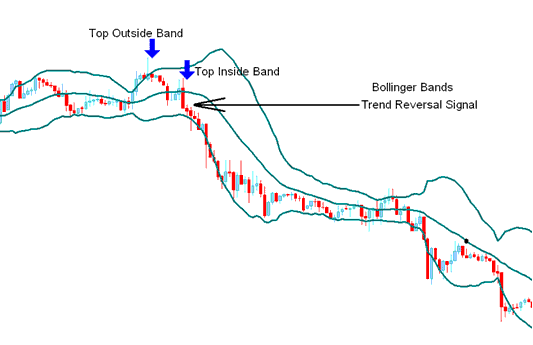Bollinger Bands Commodities Technical Analysis and Bollinger Trading Signals
Created by John Bollinger
Bollinger bands are formed by three lines. Middle line is a Moving Average - 20 period Simple Moving Average.
The bands are then drawn at a distance away from the moving average These are the bands that form the lower and upper lines.
The distance where the bands are drawn is decided by another indicator called the standard deviation. Standard deviation is a measure of volatility in the commodities trading market or that of a commodity.
Since the commodity market volatility keeps on changing, the standard deviation will keep varying, and since Bollinger bands are drawn using the standard deviation the distance of the bands will keep on adjusting themselves to the commodity market conditions.
When the commodity markets become more volatile, the bands widen and they contract during less volatile periods.
The 3 Bands are designed to encompass the majority of a commodities price action. The middle band forms the basis for the trend, typically a 20-periods simple moving average.
This band also serves as the base for the upper and lower bands. Upper band's & lower band's distance from the middle band is determined by volatility. Upper band is drawn at +2 standard deviations above the middle band while the lower band is drawn at -2 standard deviationss below the middle band.

Commodity Technical Analysis & Generating Trading Signals
- Bands provide a relative definition of high and low
- Used to identify periods of high and low volatility
- Used to identify periods when commodities prices are at extreme regions
Consolidation
The bands tighten as volatility lessens, this identifies periods of consolidation. Sharp commodities trading price breakouts tend to occur after the bands tighten.

Consolidation Pattern
Continuation Signal
If commodities trading prices break through the upper or lower band move outside the bands a continuation of the current commodity trend is expected.

Reversal Trading Signals
Bottoms & tops made outside the bands followed by bottoms & tops made inside the bands call for reversals in the trend

The Head Fake - Commodity Trading Whipsaw
Traders should be on look out for false break outs known as whipsaws or head fakes.
Commodities Price often breaks-out in one direction immediately following the Squeeze causing many traders to think the break out will continue in that direction, only to quickly reverse and make the true, more significant break out in the opposite direction.
Traders acting quickly on the initial breakout often get caught on the wrong side of the commodities trading price action, while those traders expecting a 'false breakout' can quickly closeout their original position and enter a trade in direction of the reversal. It is always good to combine Bollinger bands with other confirmation Indicators.
